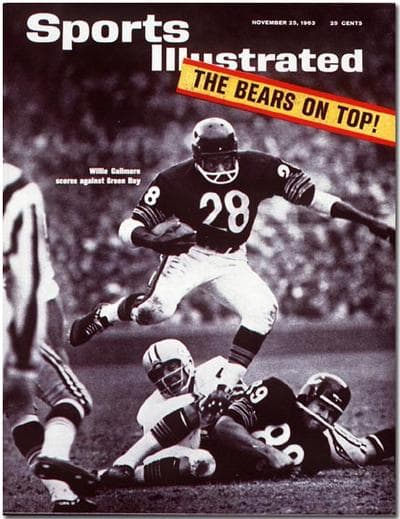Advertisement
The World In Black And White
As a young sports fan, there was nothing quite like Fridays. That was not only the beginning of the weekend, but it also was the day that the weekly issue of Sports Illustrated arrived at our suburban Boston house.
SI was the definitive source — really the only source — for sports news outside of our particular area. Back in 1963, the magazine was not even a decade old, but it was already a de facto journalistic institution and a must-read. Its only serious competitor — Sport Magazine — was a monthly, although Sport had many more color photographs.
On the rare occasions that SI used color in those days, it was invariably saved for the coveted cover shot. Even 50 years ago, it was a sign of some celebrity to appear on the cover of Sports Illustrated because (a) it meant you were featured somewhere else in the magazine and (b) it was a color picture.
When I arrived home, my mother greeted me in tears. I figured out pretty quickly that the president had died. Then my eyes glanced to the table where the mail always sat and there was Sports Illustrated.
On Friday, Nov. 22, 1963, I rode my bicycle home from junior high school with my friend, Frank Emerson. We had just learned as we were leaving school that President Kennedy had been shot. We did not know if he had died and his condition was the only topic of conversation between the two of us on the way home.
When I arrived home, my mother greeted me in tears. I figured out pretty quickly that the president had died. Then my eyes glanced to the table where the mail always sat and there was Sports Illustrated.
The cover featured a photograph of Chicago Bears running back Willie Galimore leaping over an unidentified Green Bay Packer, who was tied up on the ground with Chicago tight end Mike Ditka. “The Bears on Top” said the headline with a smaller line noting that the photo on the cover was of a scoring play.
But something else leaped out. The cover was black-and-white.
SI almost never, ever, had black-and-white covers. In 1963, of the 51 issues, there were only two in black-and-white. But to see a black-and-white cover on Nov. 22, 1963 led me to think . . .
Oh my God . . . they knew. Somehow.
“I know there are a lot of conspiracies about the Kennedy Assassination, but Sports Illustrated knowing in advance and publishing a black-and-white photo is not one of them,’’ laughed James Drake, the photographer who took the cover shot.
Drake vividly recalls the photograph and the situation that led to his assignment — a huge game which might determine who would make it to the NFL title game. But he knew going in that Sunday in Chicago that it was going to be a black-and-white shot because it was, unlike most SI covers in those days, an action shot.
Every color cover in 1963, whether a photograph or a drawing (and there 15 of those) were portraits. The other black-and-white cover that year showed University of Texas quarterback Duke Carlisle scoring against Oklahoma.
There was, for instance, no cover shot of the Loyola men’s basketball team winning the NCAA Tournament, of the Dodgers sweeping the Yankees in the World Series, of Chuck McKinley’s triumphing at Wimbledon or of Jack Nicklaus capturing the first of his six Masters’ titles.

“In order to have a color photo on the cover, you needed more time back then,’’ Drake said. “The Galimore cover was a last-minute closing.”
Two other SI photographers at the game, Neil Leifer and Lee Boiterman, also took black-and-white photographs. Their pictures ran inside to accompany the game story. The only Drake photograph that was used ended up on the cover.
“Even though it is in black-and-white, it’s still one of my favorite covers,’’ Drake said. “I like it because it had the star of the game (Galimore) leaping over the Packers’ star.”
The Bears beat the Packers that day and went on to win the NFL Championship that season. Galimore was killed in a car crash in Indiana eight months later and his uniform No. 28 was retired by the team.
Just before he died, Galimore participated in a civil rights demonstration in his hometown of St. Augustine, Fla., where he became the first African American to register at the Ponce De Leon Motor Lodge. Months earlier, the mother of Massachusetts Governor Endicott Peabody had been arrested at the same establishment while asking to be served with an integrated group of women.
There’s a Freedom Trail marker at Galimore’s old home in St. Augustine to commemorate his civil rights activism. But to millions of sports fans of all ages, he will also be remembered as the man on the cover of the nation’s foremost sports magazine which arrived in homes on Nov. 22, 1963.
In black-and-white.
This program aired on November 21, 2013. The audio for this program is not available.